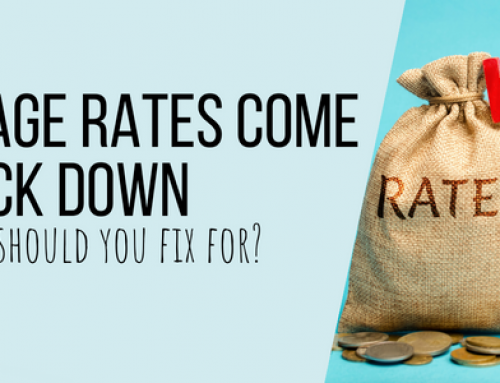Tax changes coming to your household in 2023
Reading Time: 5 minutes
January 16, 2023

News surrounding our finances and more so what happens with our finances at Government level, can be particularly confusing. We have sourced a list of tax changes coming this year so you can plan for financial changes on the horizon.
Changes to Income Tax
The freeze on the personal allowance, and the basic and higher-rate income tax thresholds in England and Northern Ireland will be extended to April 2028. The freeze on these taxes had been due to lift in 2025-26. While this freeze may not look like a tax rise on the face of it, having thresholds that fail to rise in line with salaries, you’ll still end up paying more tax on your income – particularly if you end up in a higher tax band as a result.
The biggest change announced in the Autumn Statement was the reduction of the additional-rate income tax threshold, dropping from £150,000 to £125,140 from 6 April 2023. It’s estimated around 250,000 taxpayers will be pushed into this higher tax band, paying 45% tax on any income above the new limit.
Chancellor Jeremy Hunt, said lowering the additional-rate means someone earning £150,000 will pay an extra £1,200 income tax per year.
What’s happening in Scotland and Wales?
During the Draft Welsh Budget, it was announced that Welsh taxpayers will pay the same amount of income tax as those in England and Northern Ireland from April 2023. The Welsh plan includes adopting the same additional-rate threshold change.
In Scotland, income tax rates will rise for higher earners. Under the Scottish Budget proposals, the higher rate of tax will rise from 41p to 42p in the pound, and the top rate from 46p to 47p.
The threshold for the top rate of tax will be reduced to £125,140, in line with the additional-rate tax band in place elsewhere in the UK. The personal allowance and other income tax bands (starter, basic and intermediate) will remain frozen.
National Insurance to stay the same
There were a lot of changes to National Insurance in 2022-23. First, on 6 April 2022, rates went up by 1.25 percentage points, as part of the government’s plan to pay for health and social care.
The levy was controversial, however, and as a result then-Chancellor Rishi Sunak raised the contribution threshold from £9,880 to £12,570, which came into force in July 2022.
Then, come ex-Chancellor Kwasi Kwarteng’s mini-budget in September, the levy was abolished altogether. Since 6 November, the rate employees pay on earnings between £12,570 and £50,270 therefore dropped back down to 12%, from 13.25%. Those with earnings above £50,270 now pay 2%, down from 3.25%.
After this rollercoaster, no further changes are expected for 2023-24.
Inheritance tax threshold frozen
Another threshold to be frozen is for inheritance tax. IHT is charged at 40% on assets or money you leave to your heirs after you die.
The ‘nil-rate band’ – the amount that can be passed on before IHT is due – will remain at £325,000 until April 2028. The allowance has not changed since 2010-11.
Similarly, the residence nil-rate band – which can be applied if your home is being left to direct descendants – will remain at £175,000.
This means, for example, if you leave behind an estate worth £500,000, the tax bill will be £70,000 (40% on £175,000 – the difference between £500,000 and £325,000).
Similar to the freeze on other allowances, by keeping the nil-rate band at a fixed point, rather than rising in line with price rises, more people’s estates will be dragged above the tax threshold.
Capital gains and dividend tax allowance cuts
Capital gains tax (CGT) is charged on the profits you make from selling an asset, such as a second property or valuable possession.
The tax-free allowance is £12,300 for 2022-23, but from April this will be dramatically cut to £6,000. From April 2024, it will be reduced again to just £3,000.
From 6 April, the dividend allowance will also be cut from £2,000 to £1,000. From April 2024, it will be reduced to £500.
Council tax may rise for some
Many people could see their council tax bills increase from April.
For 2022-23, local authorities could raise council tax by up to 2.99% without the need to hold a local referendum. But for 2023-24, this is set to increase to 3%, with an additional 2% if they qualify for the social care precept. This means your council tax bill could increase by 5% without needing to go to a vote.
Proposals in the Scottish Budget also paved the way for higher council tax rates, as there will be no limit set on council tax bill rises for 2023-24. However, the Scottish government is urging local authorities to act responsibly and consider the impact of any potential rate increase on already stretched household budgets.
Stamp duty changes
The changes to stamp duty, which took immediate effect from the day of former Chancellor Kwasi Kwarteng’s mini-budget on 23 September, will remain until 31 March 2025.
Until that date, first-time buyers won’t need to pay stamp duty on the first £425,000 of the property they buy (up from £300,000), while existing homeowners won’t have to pay on the first £250,000 (up from £125,000).
If you live in Scotland, homeowners start paying land and buildings transaction tax (LBTT) on properties costing more than £145,000 (or £175,000 for first-time buyers).
Scottish Budget proposals set out plans to keep these thresholds unchanged in 2023-24. However, rates increased on 16 December for people buying a second home, as the additional dwelling supplement was hiked to 6%, up from 4%. This is charged on top of standard LBTT rates.
We are not able to offer tax advice, you need a specialist such as an accountant or tax adviser.





















Follow us for updates